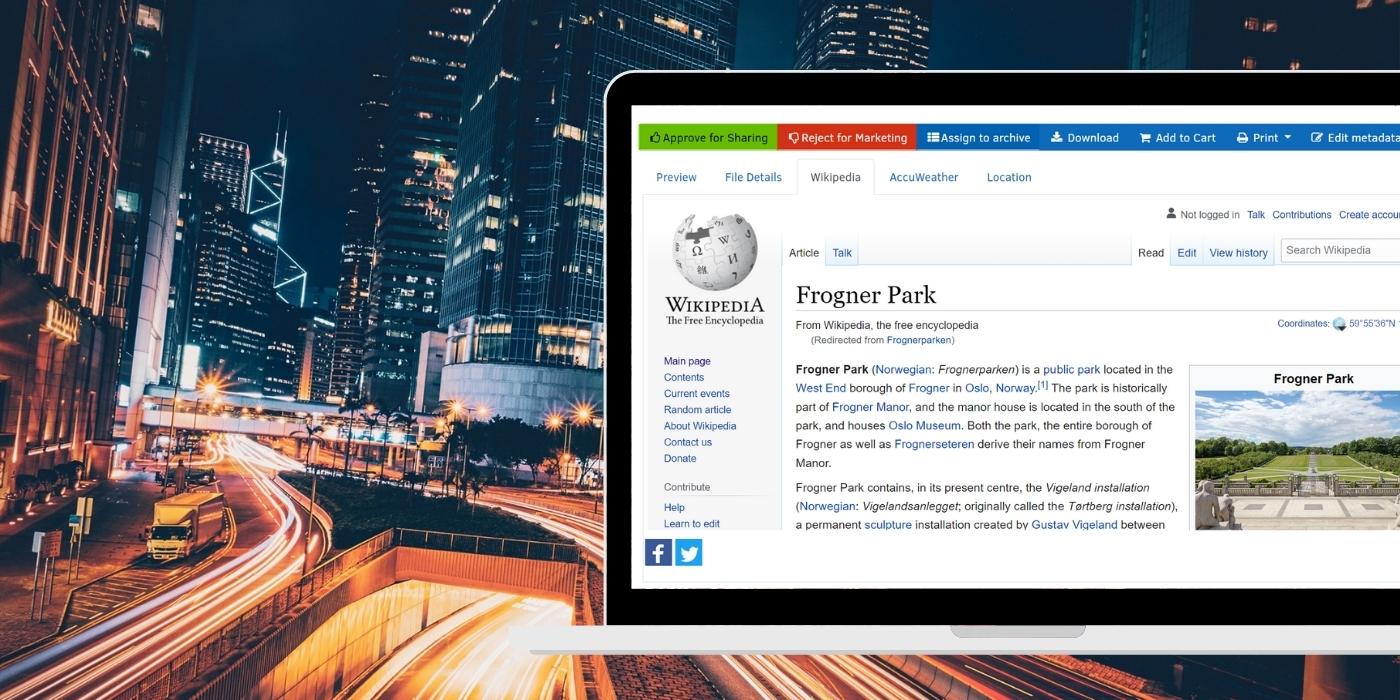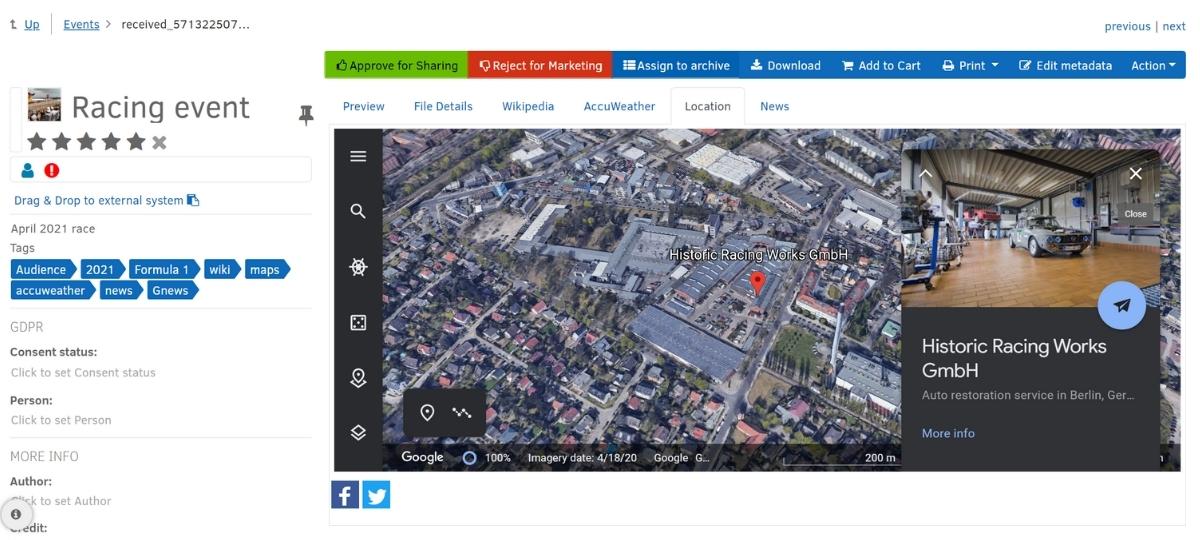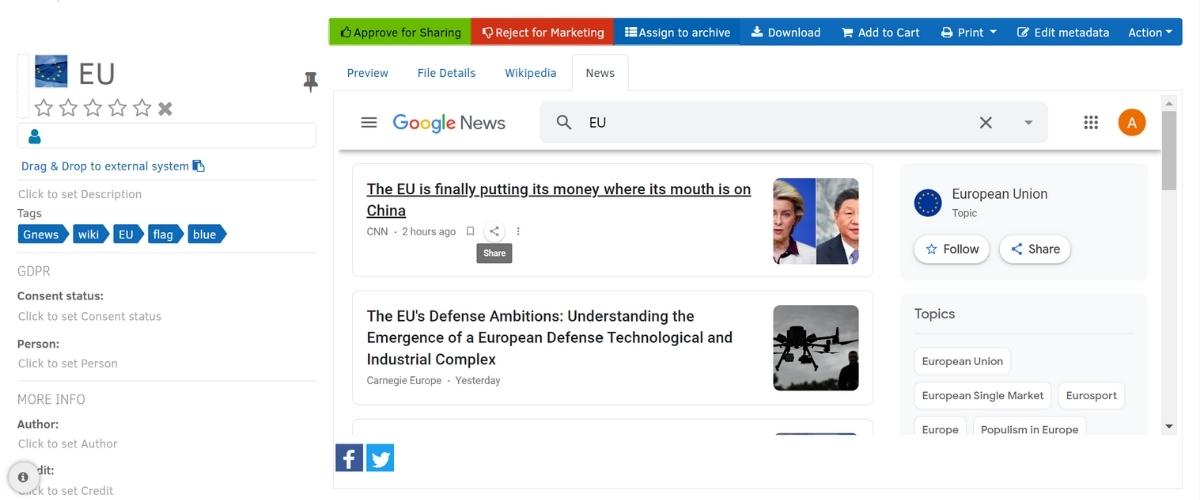
User Interface Integrations: What it is & Why you'll love it!
Earlier this fall, we released User Interface Integrations (UII) for our web interface, enabling you to embed custom web widgets, such as Google Maps, YouTube, or other external or internal web pages, directly onto your digital assets.
This feature is perfect for any team working with information-heavy files and offers a much more seamless experience when managing content.
In this article, we’ll take you through some key facts concerning UII, and we’ll explain what the feature is, what it offers, and how you can implement it.
What is UII?
In short, the UII feature enables you to add web widgets directly to your assets. As such, users of the DAM solution can find and view relevant, external sources when examining a specific file.
Using metadata, UII can be tailored to embed almost any site directly onto the asset. For example, a file tagged with Berlin can showcase the city’s Wikipedia page, placement on Google maps, weather reports, latest media coverage from Google news, or any other page that’s deemed relevant.

What UII can offer your team
The UII feature is great for any team that finds themselves with a lot of information associated with their files. Its flexibility makes it an asset across all industries: While a museum might benefit from linking its assets with Encyclopedia pages, a police force might want to attach a map that’s automatically updated when the asset’s location status changes and a media house would perhaps want to see the related news articles or research reports. All this is made possible with the UII feature, which can be customized in detail.
Some of the feature’s key benefits include:
- Optimizing your DAM to fully function as an ecosystem, with every relevant web page being immediately accessible directly from the asset itself
- Reducing time spent by users on acquiring relevant information
- Ensuring consistency in how assets are perceived by users
- Minimizing the risks of faulty information being associated with assets
LEARN MORE: What can a DAM system API do?
How to get started with UII
First, your team needs to have a Fotoware DAM solution with open API access. If you don’t have the DAM and want to see what the Fotoware solution can offer your team, feel free to book a demo with one of our experts to see it live. And if you are missing API access as part of your current solution, you can contact professional services or your designated Key Account Manager directly to discuss an expansion of your current plan.
However, if you already have the necessary setup for implementing User Interface Integrations, this is easily done through your site configurations. While it may sound complicated, configuring UII doesn’t require any programming, and the installation process is described in detail at learn.fotoware.com.
Once the application is set up, you can easily add several web widgets within it, all working independently of each other, and link them to the specific archives you deem relevant.
Want to learn more?
Talk to one of our experts to discover how we can streamline your organization's content workflows.